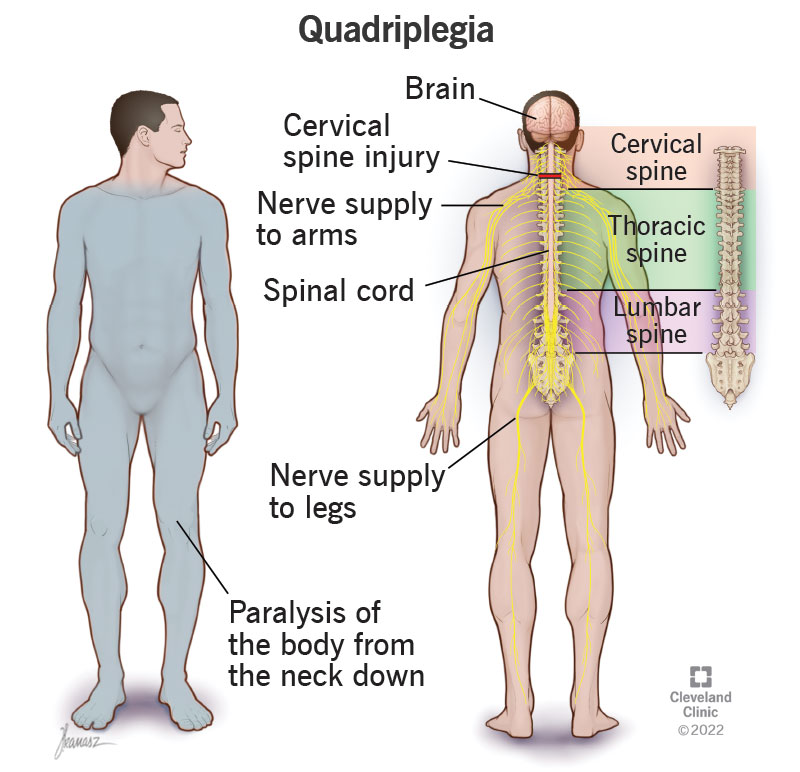
Quadriplegia
Damage to any part of the spinal cord constitutes a spinal cord injury. It may also involve injury to the cauda equina or end of spinal cord nerves. The spinal cord transmits and receives signals from the brain to the rest of the body. Below the site of the injury, a spinal cord injury frequently results in lifelong impairments to feeling strength and other bodily functions. Spinal cord injured individuals may also have psychological emotional and social aftereffects.
Overview
Quad' comes from the Latin for four, and 'plegia' comes from the Greek for the inability to move. Quadriplegia is a symptom of paralysis that affects all of a person’s limbs and body from the neck down. The most common cause of quadriplegia is an injury to the spinal cord in your neck. The loss or dysfunction of motor and/or sensory function in the cervical region of the spinal cord is known as quadriplegia. Partial or complete loss of function in the arms, legs, trunk and pelvis can result from a loss of motor function, which can manifest as weakness or paralysis.
Causes
Quadriplegia can be caused by various factors such as
Motor vehicle accidents
Falls
Contact sports
Gunshot wounds
Violence
Brainstem stroke
Oxygen deficiency
Central nervous system
Infection
Cerebral palsy
Spinal cord injury.
Symptoms
Quadriplegia symptoms include
Weakness
Loss of sensation
Bowel and bladder dysfunction
Sexual dysfunction
Breathing difficulties
Poor trunk control
Pain numbness
Tingling and spasms.
Ayurvedic View
Sarvanga vata- it is vata dosha predominant disease, where this aggravated vata enters sira (blood vessels, nerves) and snayu (tendon, ligaments), dries these by vata dosha ruksha (drying quality) and causes sandhi vishlesha (looseness of affected joint), kriya hani (loss of function), etc, when this affects the whole body (4 limbs) is called quadriplegia. The Ayurveda way of approach is to correct agni (metabolism), bring dosha back to prakruta awastha (balanced state), to rehabilitate the affected area by ayurvedic panchakarma treatment and treatment done locally for the head so as to stimulate the lost nerve function.
Quadriplegia
Treatment for
DISCLAIMER: Listed treatment details are only for information purposes. Treatments and duration may vary depending on numerous factors. Treatments for your condition may not be limited to this list.






















